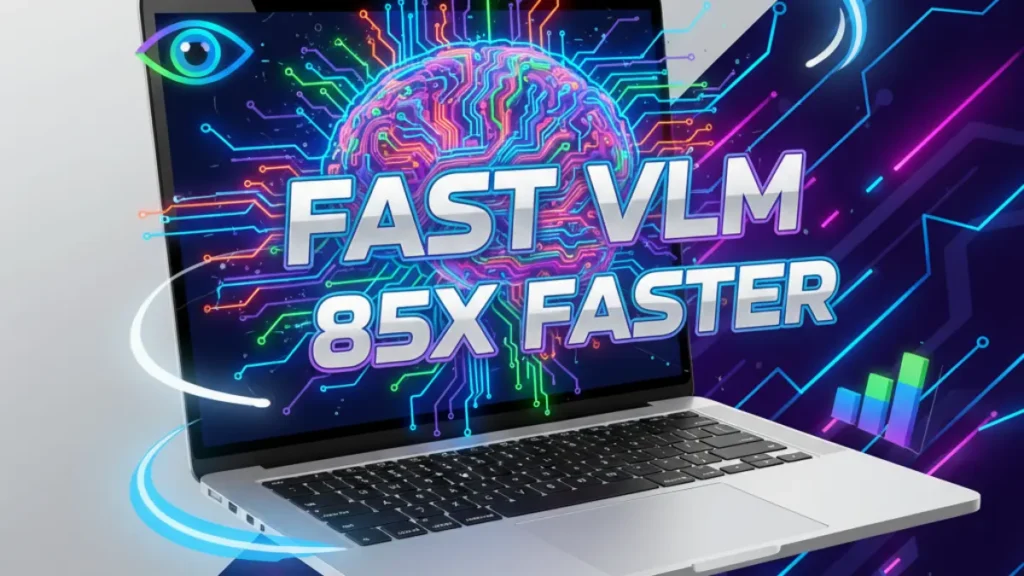Apple just pulled off something no one saw coming. The company has revealed a new vision-language model (VLM) called Fast VLM, and the numbers are jaw-dropping: it’s 85 times faster, three times smaller, and capable of running smoothly on a MacBook Pro.
This isn’t a lab demo or a distant future promise—it’s working now, on consumer hardware. That’s why the AI world is paying close attention.
Key Takeaways
- 85X faster than rival AI models.
- Runs directly on MacBook Pro, no giant servers needed.
- Combines speed + accuracy using fewer tokens.
- Hybrid design: convolution + transformer efficiency.
- Beats or matches top models across multiple benchmarks.
Why This Matters
Vision-language models are designed to handle both text and images together. They can analyze documents, screenshots, charts, or photos and generate meaningful responses.
The challenge has always been speed. High-resolution images make these models smarter, but they also slow everything down. Apple tackled this head-on, creating a system that delivers real-time performance without losing detail.
Inside Apple’s Breakthrough
At the heart of Fast VLM is a new encoder called Fast ViT-HD. It’s a hybrid design that blends the best of two worlds:
- Convolutions quickly capture fine image details.
- Transformers analyze the bigger picture and relationships.
Apple added an extra downsampling stage to shrink image data more efficiently, producing four times fewer tokens while keeping quality intact. The result: faster processing, lower latency, and no major accuracy trade-offs.
The Numbers That Prove It
Apple’s results are not just incremental—they’re dramatic:
- 85X speed boost in Time-to-First-Token vs. Lava 1.5.
- 3.4X smaller encoder size.
- 8.4% improvement in text-based visual benchmarks.
- 5X fewer tokens needed compared to rivals.
Even more surprising: Apple trained these models using just eight NVIDIA H100 GPUs, showing efficiency not just in performance but also in development.
Why It’s Different
Other AI research groups have tried pruning, token sampling, or tiling tricks to cut down on slowdowns. Apple avoided complicated fixes by designing a system that naturally reduces tokens while keeping detail intact.
That means less complexity, more speed, and better results.
What This Means for the Future
Apple’s Fast VLM hints at where AI is heading next:
- 🔐 On-device AI that keeps data private.
- ⚡ Real-time responses without lag.
- 🔋 Energy-efficient assistants for consumer devices.
- 🧩 Compatibility with both small and large language models.
Imagine a MacBook, iPhone, or Vision Pro that can instantly understand documents, photos, and screens—without sending data to the cloud. That’s the future Apple is building.
Industry Impact
This move signals a shift in the AI race. While companies like OpenAI, Google, and Microsoft chase ever-larger cloud models, Apple is proving that smaller, faster, and local might be the smarter path forward.
By showing that efficiency can beat brute force, Apple may have just set a new standard for multimodal AI.
Conclusion
Apple’s Fast VLM is more than just a new AI model—it’s a blueprint for the future of intelligent computing. Faster, smaller, and capable of running directly on everyday devices, it shows that the next phase of AI isn’t about size—it’s about speed, efficiency, and accessibility.
Apple didn’t just join the AI race—they may have changed its direction.
Source Apple
